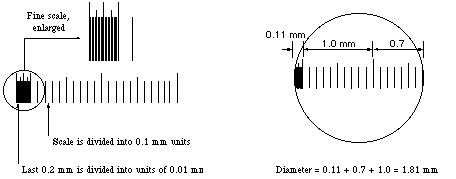
Taking a microphotograph with a DSLR using the “direct method” the microscope head with oculars and the camera lens are removed the camera is connected to the microscope using extension tubes and a dovetail adapter.

You can slightly adjust the fine focus knob of the microscope to correct this issue. However, if you attach your DSLR camera to the microscope using the ocular adapter like shown in the picture, the sensor will be higher than the primary image plane. On a DSLR camera body, there is the focal plane mark showing the location of the sensor inside the camera. The sensor of the camera must be placed in the plane where the primary image is formed in the microscope. It is obvious that this image can be formed not only on the frosted glass, but also on the camera sensor if we remove the camera lens. We can view this image if we put a frosted glass instead of an eyepiece as shown in the picture. The second method is called “direct imaging” and uses the fact that the microscope objective forms a real image on the plane of focus of the ocular.

The real image is formed on the frosted glass.

Information about the magnification includes a number followed by ×, for example, 5×, 10×, 100×. The magnification of the objective and ocular lenses can be found on their casings along with other information about them. The magnification of a compound optical microscope M total is the product of the magnifications of the objective lens M obj and the ocular (or eyepiece) M ocul: Locking screws for securing specimen holder to stage.Illuminator collector with field diaphragm.Knob controlling the lateral movement of the stage.Knob controlling the back and forth movement of the stage.Sliding interpupillary adjustment grips.


 0 kommentar(er)
0 kommentar(er)
